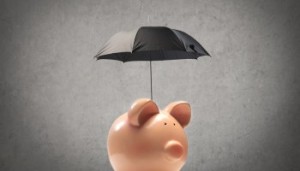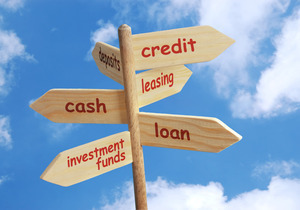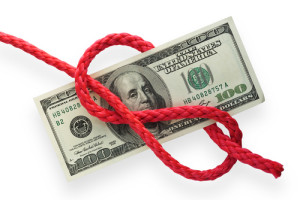March 10, 2016
 When creating an overall financial portfolio, investors typically consider how to allocate assets into categories such as growth, income, and cash or cash equivalents. But, often they will tend to forget about something that, without it, could be detrimental to literally everything else that they’ve worked for. That is life insurance.
When creating an overall financial portfolio, investors typically consider how to allocate assets into categories such as growth, income, and cash or cash equivalents. But, often they will tend to forget about something that, without it, could be detrimental to literally everything else that they’ve worked for. That is life insurance.
Life insurance is, in many ways, one of the most essential elements in a financial portfolio. This is because it can provide protection for all of the other assets – especially in the case of the unexpected.
For example, in its most basic sense, life insurance is made to protect a surviving spouse or loved ones from the financial consequences of unpaid debt and / or ongoing living expenses should a primary income earner pass away.
But life insurance can also be used in other financial planning areas, too.
Using Life Insurance for Diversification
In addition to death benefit protection, there are many life insurance policies that will also provide policy holders with a way to protect their cash value from market volatility, as well as from the high cost of a long-term care need.
In other cases, cash value life insurance can also be used as a primary or a secondary financial vehicle for saving for a child’s or a grandchild’s future college education expenses – and oftentimes this can provide a much more flexible mechanism even than the 529 college savings plan.
Life Insurance as an Income Supplement
If structured in the proper manner, certain cash value life insurance policies today can also be set up to help policy holders in supplementing their retirement income on a tax-free basis. With all permanent life insurance policies, cash value is allowed to grow tax-deferred. This means that there are no taxes due on the gain on those funds until the time they are withdrawn.
In many cases, a life insurance policy owner will either borrow or withdraw their cash value for a variety of different needs. These can include paying off loans, funding the college expenses of a child or a grandchild, or even taking a nice vacation.
The money that is taken out as a loan will not be taxed to the policy holder – and, it can typically be borrowed at very low interest rates (usually quite a bit lower than that of a bank or other lender).
Over the past several years, many pre-retirees have been taking advantage of the many benefits that indexed universal life insurance (IUL) can provide. This is because the cash in these policies has the opportunity to increase based on market indexed linked growth, yet it is protected from downward market movements by being credited with a return of 0% in negative periods.
Cash can be borrowed tax-free in order to supplement retirement income – and, if the policy holder passes away, any unpaid loan balance will simply be charged against the death benefit that is paid out to the policy’s beneficiary.
Making Your Financial Plan Complete
In all, while life insurance should still be considered for its death benefit protection, it also has so much more to offer – and because of that, it should not be thought of as just a “stand alone” product, but rather as an important and essential piece of the overall financial planning puzzle.
When constructing your overall financial plan, it’s important to be sure that you have the right type and amount of life insurance coverage. This is because you don’t want to leave your loved ones short just in case of the unexpected.
When choosing your life insurance plan, know that not all policies are the same, so you want to be sure that you shop for the policy, the benefits, and the insurer that will be the best for you and your specific needs and goals.
An independent insurance advisor can help you to fit the coverage to your plan, as versus the other way around. By working with many different life insurance carriers, going with an independent agency will allow you to shop in an unbiased manner while putting all of the pieces together when you’re ready to move forward.
Tags:
budgeting,
Claims,
Coverage,
economy,
financial planning,
insurance,
investments,
life insurance
March 1, 2016
 Your decisions about what college or university to attend will be a decision that affects the rest of your life—literally.
Your decisions about what college or university to attend will be a decision that affects the rest of your life—literally.
From the close knit, lifelong friendships you’ll develop as a result of living with people to the content and information you’ll learn in your courses, your choice of college will carry with you until your last breath. The choice will shape your career and aide in transforming you into a responsible adult. You need not take it lightly.
A lot of times, when young adults are preparing for high stake tests, planning for graduation and exploring their college options, they get held up deciding whether or not to go to school close to home or to travel far away. There are pluses and minuses on both sides of the decision.
True cost and saving
The biggest plus of staying home and attending college is cost. You’ll save a lot of money if you don’t go away. The cost of room and board can be forgone when you live at home and eat your parents’ food. It may not seem like a big deal when you’re thinking about leaving, but student loan debt, like your choice of college, will also play a part of your life for a long time—not quite until your last breath, but it’ll haunt you until close to that day.
Aside from cost, there’s a lot more that weighs into deciding to travel far away or stay close to home. If you’re considering leaving the state in which you reside, your tuition will be higher than it is for in state residents. Couple that with the travel costs when you want to return home, and you’re racking up bills that will be a part or your budget for a lofty amount of time. That’s when priceline and other online coupon websites come in handy!
In addition to costs, there’ll be periods of time when you long for home, and home will be out of reach. You’ll stumble across nostalgic moments when you want to see an old high school friend, and planning a weekend together will be logistically impossible. You may get sick and yearn for the way mom coddles you with soup and ginger ale. That will not be an option if you’re too far from home.
The price for adventure
Conversely, traveling far away for college brings with it much adventure. You’ll be completely independent when you’re far from home. You’ll be responsible for every aspect of your life—when you eat, when you sleep, where you go out. Traveling away to school strengthens the responsibility skills you need to foster that independence.
Adventure lies around every corner when you travel away to school as well. New and exciting people, places, and things will fill your free time. These experiences will also go a long way in helping you develop into a strong, independent adult.
Conclusion
College is meant to be an experience. You have so many options to think about when you’re choosing a school. You can go away, you can stay home, or you can venture close enough that you can still come home affordably and comfortably.
Nevertheless, the decisions you make regarding what school to attend will be one that will be part of you for the rest of your life. Make sure you take your time and weigh your options so that you choose the best school for you!
Tags:
budgeting,
Costing,
expenses,
financial planning,
loans,
money,
savings
February 20, 2016
 Traditional assets consist of stocks, bonds, or money. Individuals capitalize in such products with the expectation of capital appreciation, surplus on the original investment, and earnings on interest. For many years, people have been limited to financing only these asset products.
Traditional assets consist of stocks, bonds, or money. Individuals capitalize in such products with the expectation of capital appreciation, surplus on the original investment, and earnings on interest. For many years, people have been limited to financing only these asset products.
Alternative investments have created a broader field for individuals to capitalize in. This type of investment relies upon asset classes that have little to no correlation with more traditional forms of ventures.
Types of Alternate Financing
Private equity: there are a greater number of private corporations than there are public ones. These private companies tend to take on investor capital. Private equity firms are essentially ones that raise the necessary funds from a variety of investors. These resources will then be placed with favorable private corporations. The money is then returned to investors once an IPO or acquisition has taken place.
Venture capital: this is a division of private equity. Here the investment takes place among companies that are just beginning, before they have had a chance to grow. Venture capital firms gather funds from various groups. They then disperse these reserves to a variety of companies that are just starting out. This type of financing is usually more of a gamble. In the event that these start-up corporations succeed, however, the investors can expect an impressive return of their capital.
Hedge funds: these funds consist of a compilation of several investments. These are then placed in a variety of schemes and assets. The difference between hedge funds and private equity is that hedge funds will also place ventures with public companies. There is also more liquidity offered with hedge funds. This way investors have more access to their money and can withdraw it with greater ease. Some of the more typical hedge fund strategies are distressed investments, arbitrage, and macro-trends.
Advantages of Alternate Financing
The inclusion of alternative financing asset classes in a portfolio will greatly increase its diversification. This is because they have very little or no association with more traditional asset classes such as stocks. This means that your investments are less likely to be affected by the performance of the stock market. Thus, the inclusion of this type of investment reduces the overall volatility of the portfolio.
Alternatively, this type of investment has a good correlation with inflation. This property ensures that it serves well as a hedge against inflation. This indicates that it would provide a solid return rate on a long-term investment.
In certain instances, alternate investments can actually produce greater returns than traditional investment. One of the advantages afforded to this non-traditional form of investment is the wider range of financing opportunities. The investors can choose to invest in both public and private corporations. They also face less constraints and are subject to fewer regulations. This can result in better returns subsequent to long-term performances.
Typically, these types of investments have always been considered more of a risk than stocks, bonds, or cash. It is, however, this increased gamble that can ensure that the return against the venture is also impressive.
Tags:
Assets,
Cash Flow,
economy,
Equity,
financial planning,
investments,
money,
stock
January 7, 2016
 Ten million dollar is never really a small amount. And, when it is said that pretty much similar amount is unclaimed, then it’s certainly something that can make you go taken back. However, it’s a fact, and there is good news as well. According to the reports, about 9.9 million dollars’ worth unclaimed money has been counted, and it is said to be owed to West Australians in the current financial year 2014-2015.
Ten million dollar is never really a small amount. And, when it is said that pretty much similar amount is unclaimed, then it’s certainly something that can make you go taken back. However, it’s a fact, and there is good news as well. According to the reports, about 9.9 million dollars’ worth unclaimed money has been counted, and it is said to be owed to West Australians in the current financial year 2014-2015.
If you can arrange the proof in your favor, then the amounts can be yours. Interestingly, there is no provision for time confines in this regard. Additionally, someone who manages to prove things in his/her favor can bag these amounts, doesn’t matter how long back the amount has been there. The same report claims in past one year that about three thousand unrecognized accounts have been spotted, those rake an amount of about one point five billion dollars. It is believed that these amounts are owed to Western Australians. Hence, it is inspired all to try their best in claiming these amounts.
It is getting more baffling to identify the owners of these amounts as the sources have been eclectic and more importantly those are not personal. In the last four quarter, unauthorized amounts in about four thousand bank accounts have been identified to be coming from various share market transactions. Some of those have been also identified through property businesses. On a sum, these amounts count to about ten million dollars.
It is here to mention that the governmental bodies can get these unauthorized amounts. These departments can claim the amounts in reference to the Unclaimed Money Act made in 1990. The act has been formed to offer security to the amounts of people; those might have been not asked for due to some reasons. Especially, professional people those have to fly different nations and people having multi-national citizenship are more frequent to be coming across with such issues. There remains every possibility for these people to have some unclaimed amounts.
Making things easy, Money Catch has a nice line-up of such anonymous amounts. It is having the list of the accounts having amounts for the departed estates those involve the unidentified claimers, or the details those can’t be identified.
Money Catch Database holds some interesting calculations as well. Reportedly, in last one month of period (twelve months), the biggest personal unauthorized amounts rake an amount of $421,783. The next personal big amount identified is said to be $210,000. These amounts have been listed within the unclaimed money database of Money Catch in past one year.
Apart from this, Wesfarmers Ltd reported a big number for unidentified money. The company reported an unknown amount of about 2.3 million dollars. Woodside Petroleum Limited is also reported such unknown amounts of about eight hundred thousand dollars. The above two were certainly attention ragging. However, on a collective note, there are about seven more companies reported such unknown amounts those are said to be varying anywhere between four thousand dollars to six thousand dollars.
Is there any chance for you to be having any such mysterious amounts? Have a try!
Tags:
economy,
financial planning,
investments,
money
December 15, 2015
 The statisticians may tell us that the recession has been over for three or four years and that incomes have returned to pre-crisis levels. But for millions of people in the UK, the reality is that times are still hard and money short.
The statisticians may tell us that the recession has been over for three or four years and that incomes have returned to pre-crisis levels. But for millions of people in the UK, the reality is that times are still hard and money short.
The good news, however, is that while you may have had a difficult year financially during 2015, there is no reason why you can’t make a New Year’s resolution to get your finances back on track in 2016. The situation is rarely hopeless, particularly if you are in work or have some other regular income. Even if you have large unsecured debts, there is usually a way for you to start reducing them and increase your disposable income at the same time.
If you want to tackle your financial issues in the year ahead, then you’re going to need some discipline and some determination to change the way that you may have behaved over the last few years. Getting your finances back on track may not be easy but it is probably simpler than you think:
1. Stop beating yourself up
This is a prerequisite if you want to reduce your anxiety levels and make a start on tackling whatever financial problems you may currently be facing. It’s human nature to keep going over past mistakes and blaming oneself for silly decisions but what is done is done and now is the time to drop the blame and start concentrating on the future. Learn to accept what has happened and move on, concentrating instead on implementing positive steps to improve your financial outlook.
2. Make a financial inventory
Do you actually know how much you owe banks, mortgage companies and other financial organisations? It’s important to have a grasp of your total liabilities so that you can put in place long-term plans to repay this debt entirely. That means making an inventory of everything you owe – both secured and unsecured – as well as the remaining loan terms and the interest rates which you are being charged on each loan and credit card.
3. Prioritise credit with higher interest rates
If you’re going to make inroads into your debts in 2016 and relieve the pressure you’re under, then you should start increasing the amounts you repay on the mortgages, loans and credit cards that charge the higher amounts of interest. This is the only way that you’ll be able to increase the speed that you reduce your total amount of debts.
4. Make a list of everything you spend for a month
If you’ve got Excel or other spreadsheet software and know how to use it, then this is a brilliant tool for doing this important task. Make sure you list all of your income and all of your expenditures. Don’t be tempted to miss out things like coffees from the coffee shop or the odd treat – you need to be completely honest with yourself about where your money is going before you progress onto the next step.
5. Make a household budget
Once you’ve worked out everything you spend for a month, you’ll be in a good position to set a household budget. Using your spreadsheet program, list all outgoings (with the fixed ones at the top) and all of your income. Let the software work out totals (if you know how) and then calculate whether you should have money left over or if you are spending more than you earn. If it’s the latter, look at the non-essentials on your list and consider what to cut. Think about your food budget – could this be reduced either by using a cheaper supermarket or by cutting out some of the items which might be considered luxuries? The household budget will make it much easier to see where you can save money and divert that into reducing your household debt.
6. Consider consolidating debt
If the amount you’re paying in interest, fees and other charges is overwhelming you, you might want to make 2016 the year when you consolidate all those cards and other loans into a single, monthly repayments. Plenty of companies beyond the high street banks offer consolidation loans and the amount of interest you’ll pay may be surprisingly lower than you’re currently used to. The amounts on offer go all the way up to £25,000 for unsecured loans and even higher if you consider secured lending.
7. When you’ve paid off a card, close it
If you’ve got unused credit available, there is always going to be the temptation to start buying things that you probably can’t afford. The easiest way to stop yourself doing this is to close card accounts when you have paid off the outstanding balance. Always leave yourself one to cover financial emergencies but get rid of the rest and use the money you are saving to pay off further debt.
8. Debt repayment is a snowball – learn how to use it
When a snowball rolls downhill, it not only gathers speed but it grows larger and larger as it picks up more snow. Debt repayment is exactly the same if you are disciplined about it. When you start paying back debt, you reduce the amount of interest that you’re paying and so release money to pay off even more debt and so on. If you hit the loans and cards with the highest interest rates first, you’ll be tackling the biggest source of your financial worries and releasing more and more money to pay off other debts more quickly.
Article provided by Mike James, an independent content writer in the financial sector – working with a selection of companies including Solution Loans, a technology-led finance broker with many years experience – who were consulted over the information contained in this piece.
Tags:
budgeting,
Credit Card Debts,
Debt Problems,
Debts,
economy,
financial planning,
personal finance
 When creating an overall financial portfolio, investors typically consider how to allocate assets into categories such as growth, income, and cash or cash equivalents. But, often they will tend to forget about something that, without it, could be detrimental to literally everything else that they’ve worked for. That is life insurance.
When creating an overall financial portfolio, investors typically consider how to allocate assets into categories such as growth, income, and cash or cash equivalents. But, often they will tend to forget about something that, without it, could be detrimental to literally everything else that they’ve worked for. That is life insurance.




Recent Comments